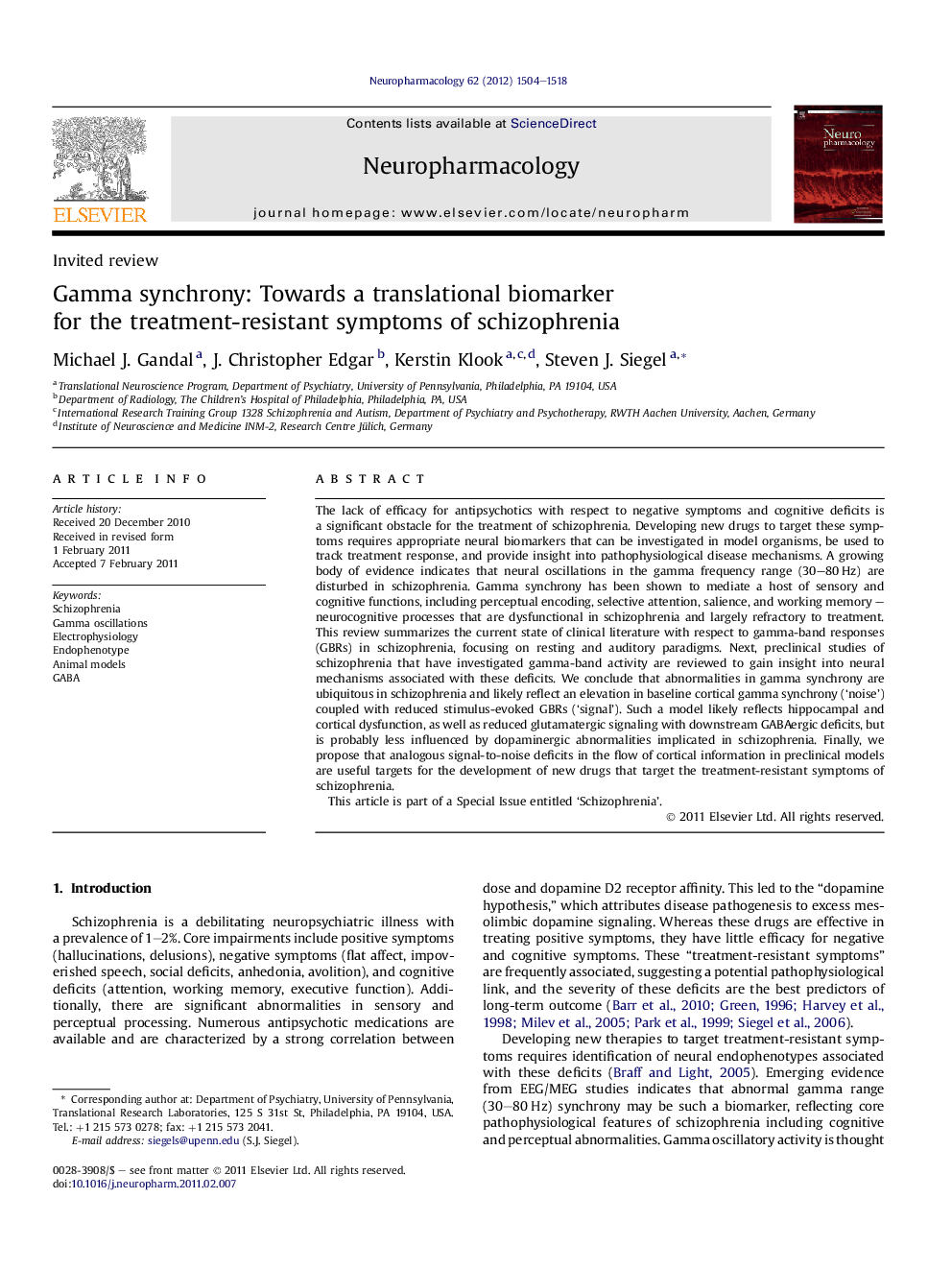| کد مقاله | کد نشریه | سال انتشار | مقاله انگلیسی | نسخه تمام متن |
|---|---|---|---|---|
| 5815916 | 1115532 | 2012 | 15 صفحه PDF | دانلود رایگان |

The lack of efficacy for antipsychotics with respect to negative symptoms and cognitive deficits is a significant obstacle for the treatment of schizophrenia. Developing new drugs to target these symptoms requires appropriate neural biomarkers that can be investigated in model organisms, be used to track treatment response, and provide insight into pathophysiological disease mechanisms. A growing body of evidence indicates that neural oscillations in the gamma frequency range (30-80Â Hz) are disturbed in schizophrenia. Gamma synchrony has been shown to mediate a host of sensory and cognitive functions, including perceptual encoding, selective attention, salience, and working memory - neurocognitive processes that are dysfunctional in schizophrenia and largely refractory to treatment. This review summarizes the current state of clinical literature with respect to gamma-band responses (GBRs) in schizophrenia, focusing on resting and auditory paradigms. Next, preclinical studies of schizophrenia that have investigated gamma-band activity are reviewed to gain insight into neural mechanisms associated with these deficits. We conclude that abnormalities in gamma synchrony are ubiquitous in schizophrenia and likely reflect an elevation in baseline cortical gamma synchrony ('noise') coupled with reduced stimulus-evoked GBRs ('signal'). Such a model likely reflects hippocampal and cortical dysfunction, as well as reduced glutamatergic signaling with downstream GABAergic deficits, but is probably less influenced by dopaminergic abnormalities implicated in schizophrenia. Finally, we propose that analogous signal-to-noise deficits in the flow of cortical information in preclinical models are useful targets for the development of new drugs that target the treatment-resistant symptoms of schizophrenia.This article is part of a Special Issue entitled 'Schizophrenia'.
⺠Gamma-band responses (GBRs) are essential for cortical information processing. ⺠GBRs are widely disrupted in schizophrenia, across paradigms and brain regions. ⺠Gamma deficits have been linked to treatment-resistant disease symptoms. ⺠Analogous abnormalities have been reported in preclinical disease models. ⺠Abnormal gamma signal-to-noise represents a biomarker for drug development
Journal: Neuropharmacology - Volume 62, Issue 3, March 2012, Pages 1504-1518